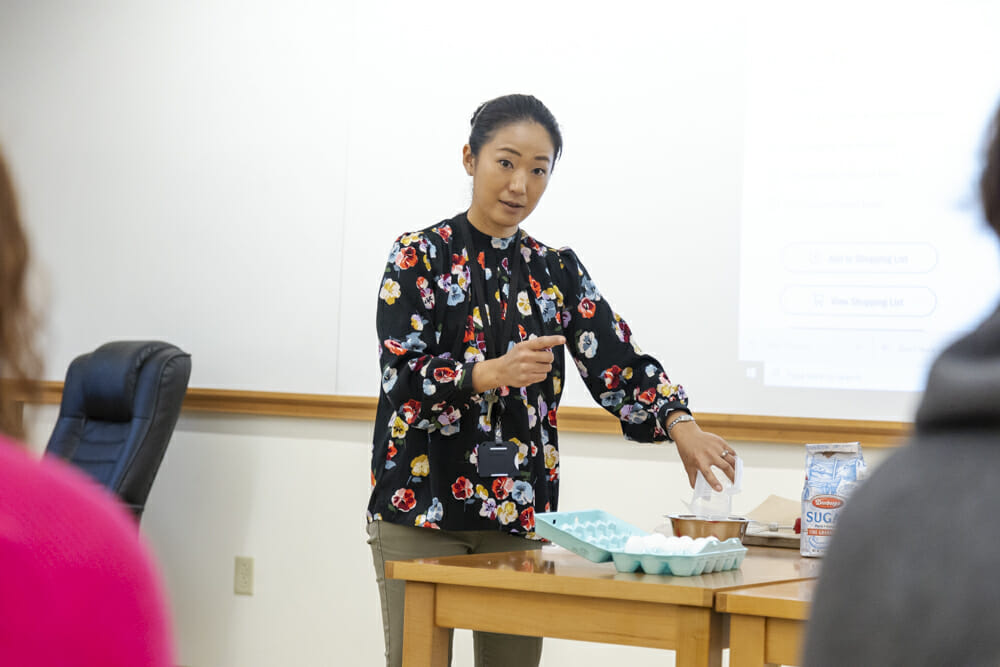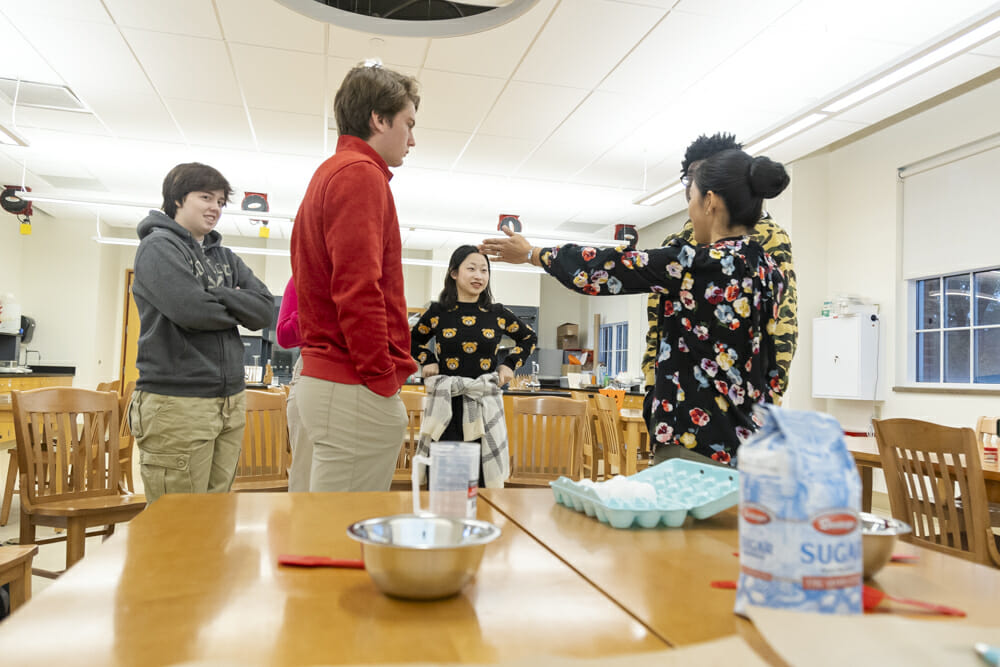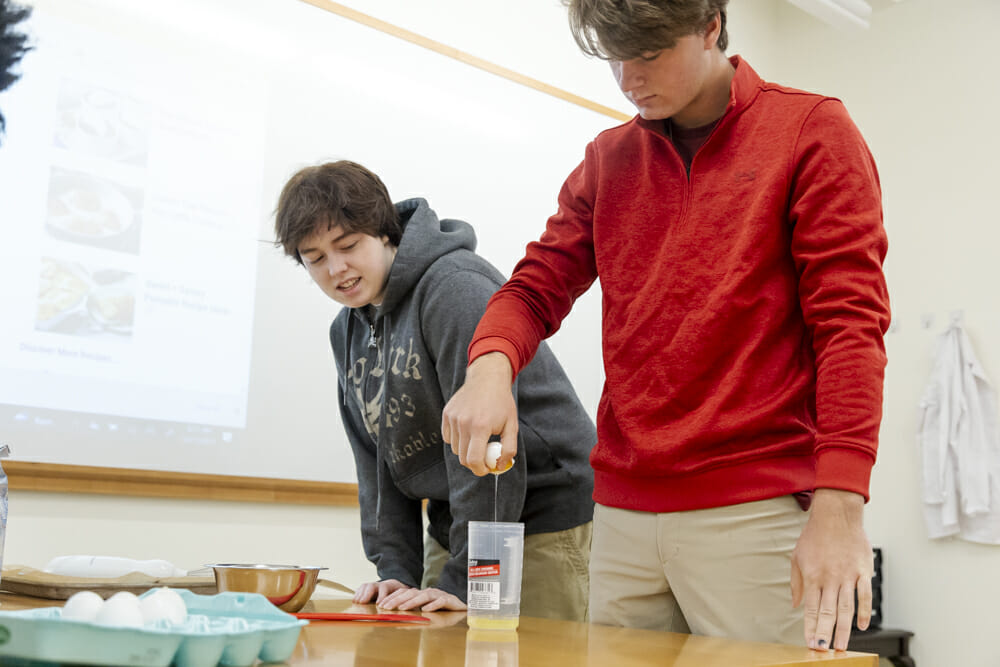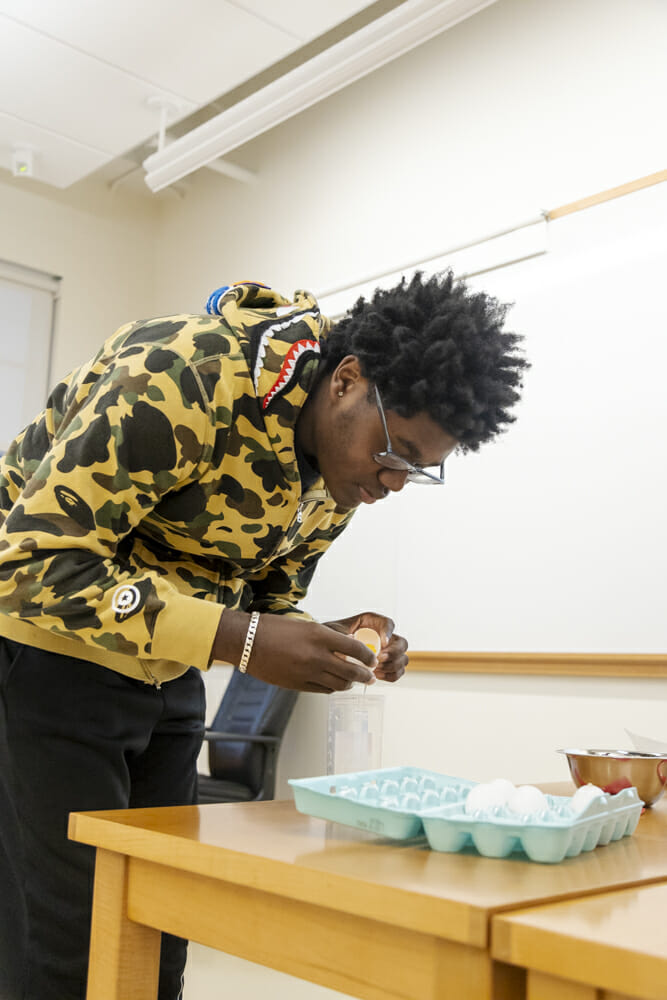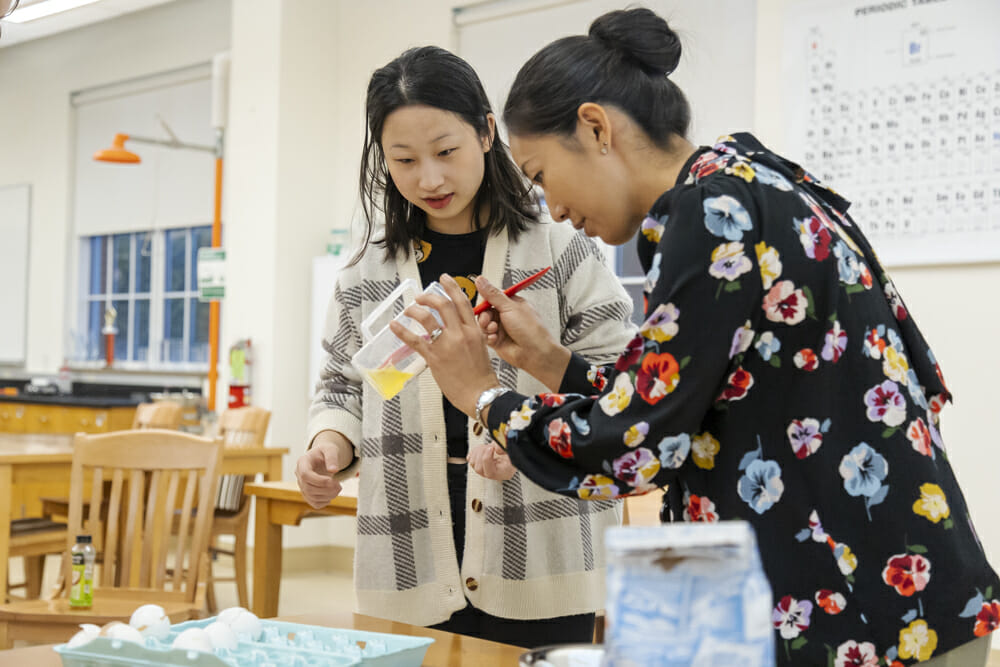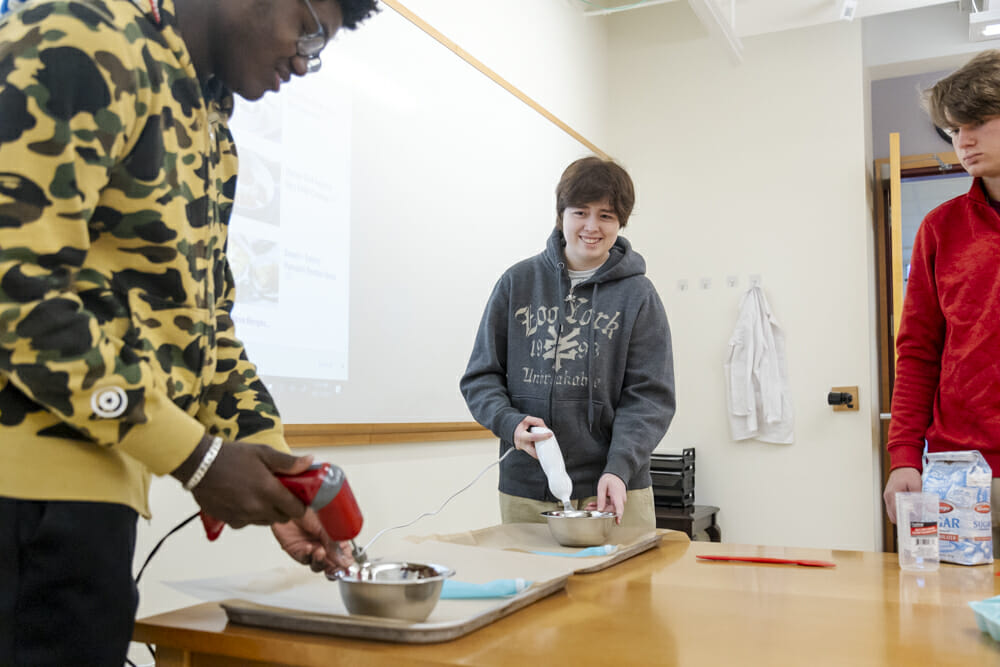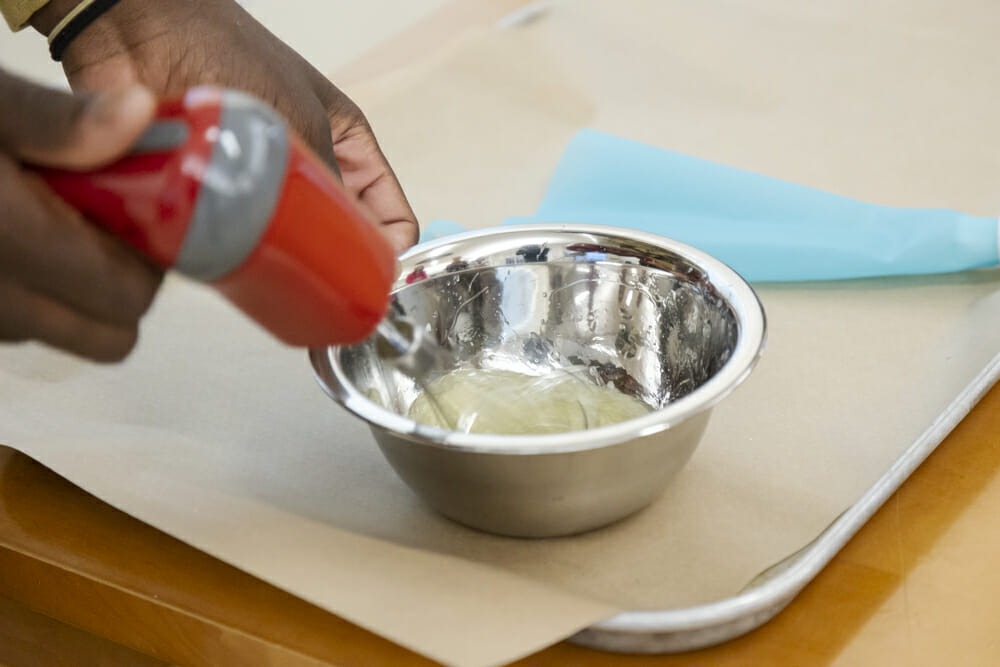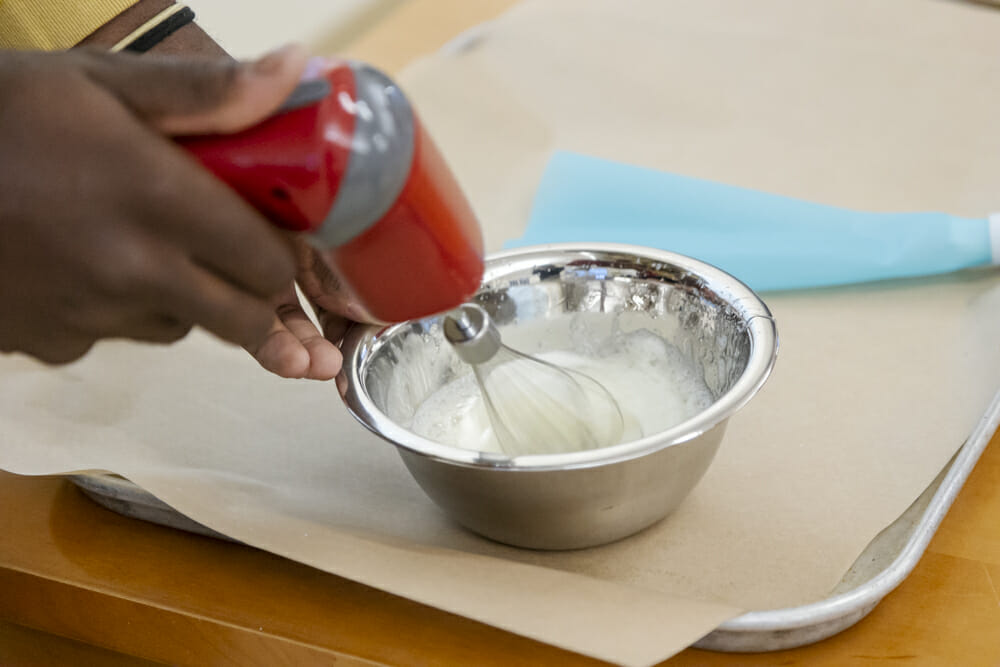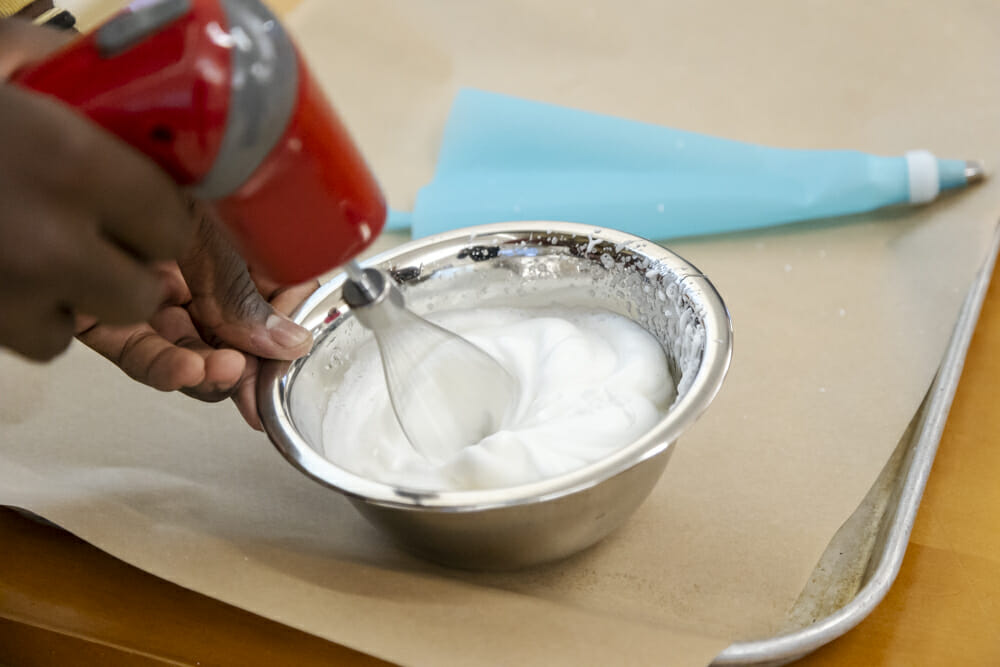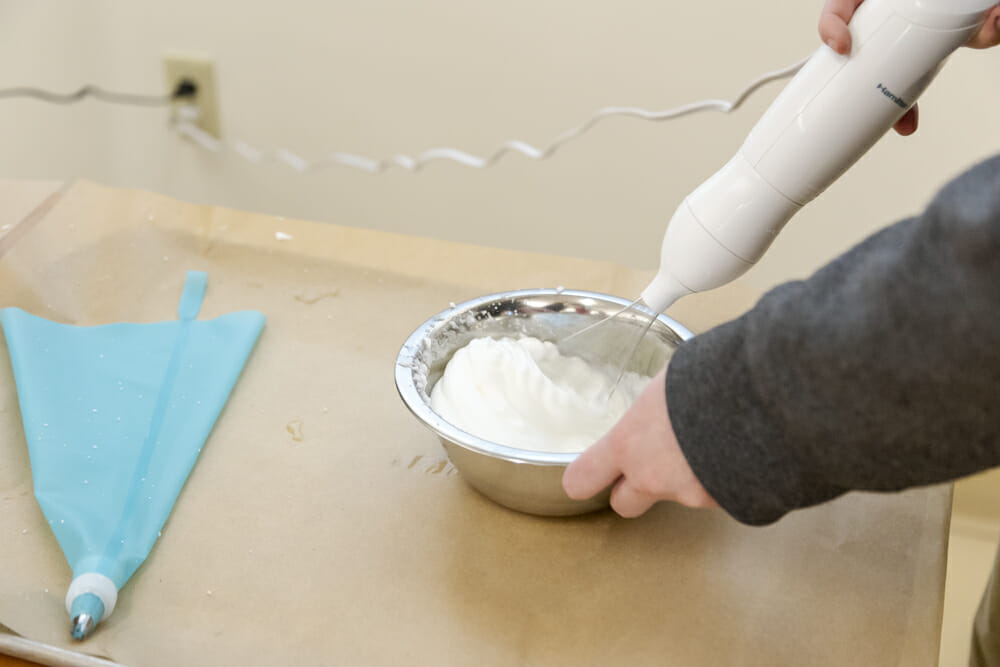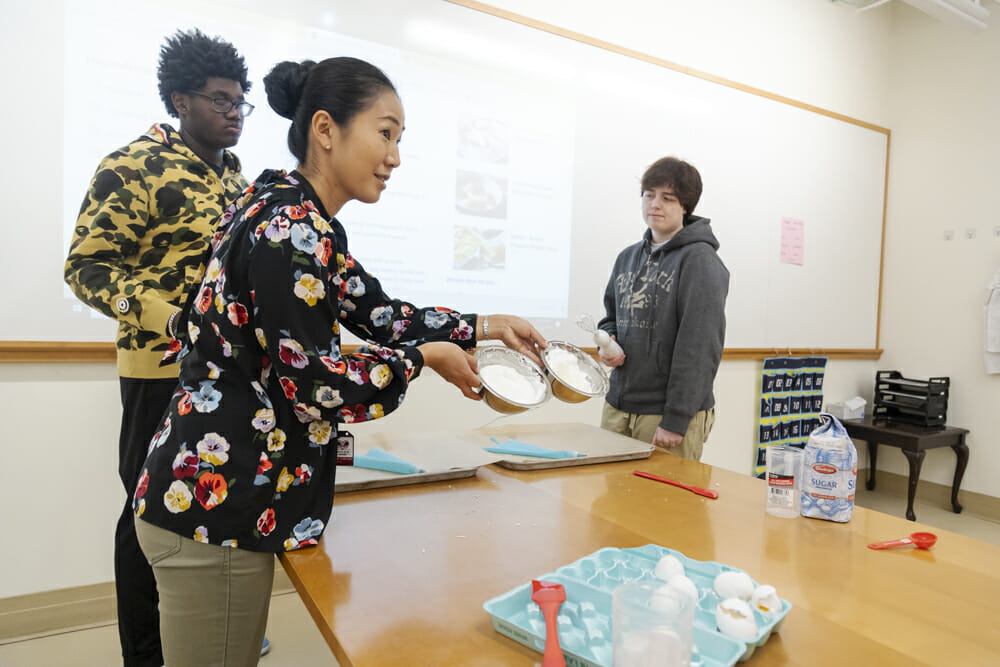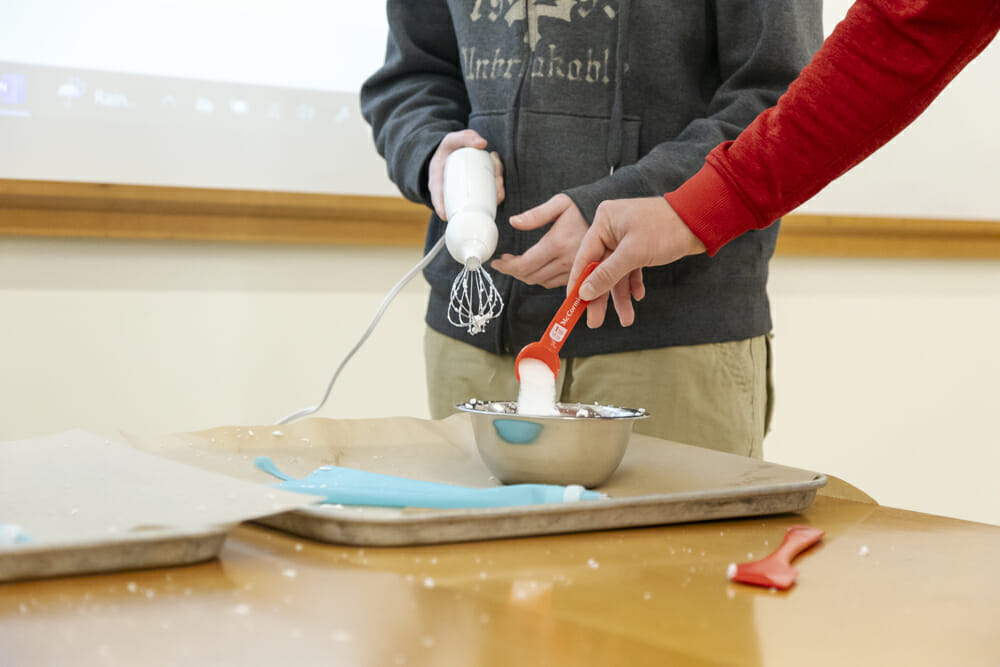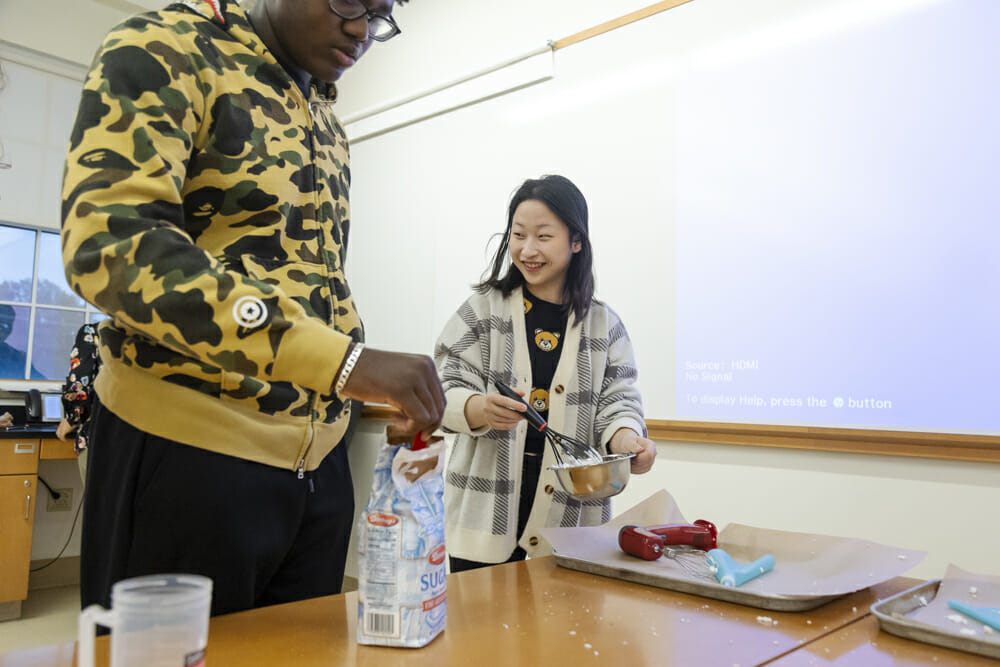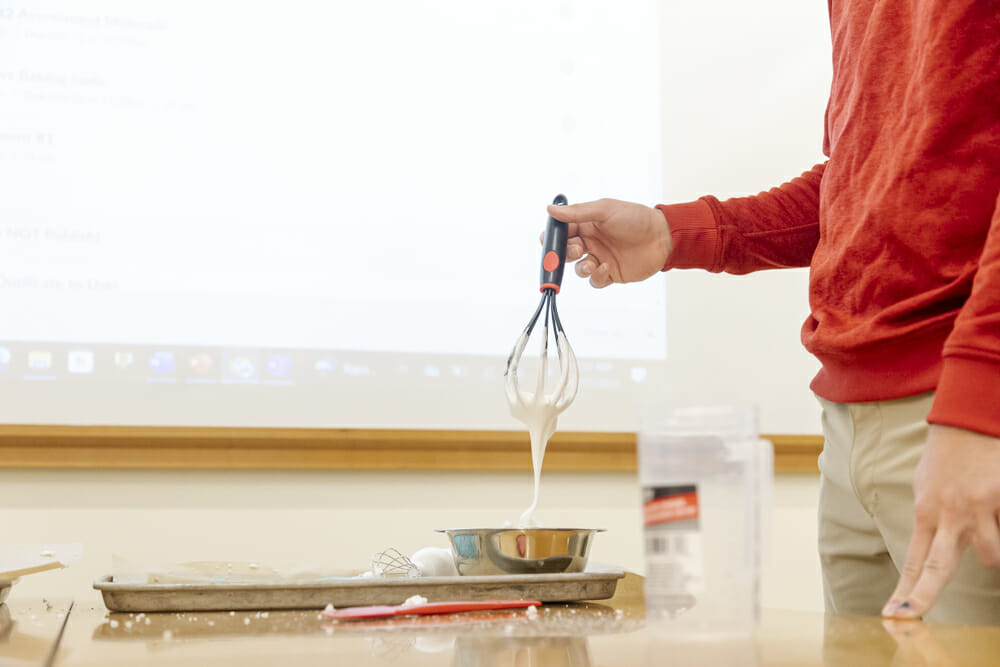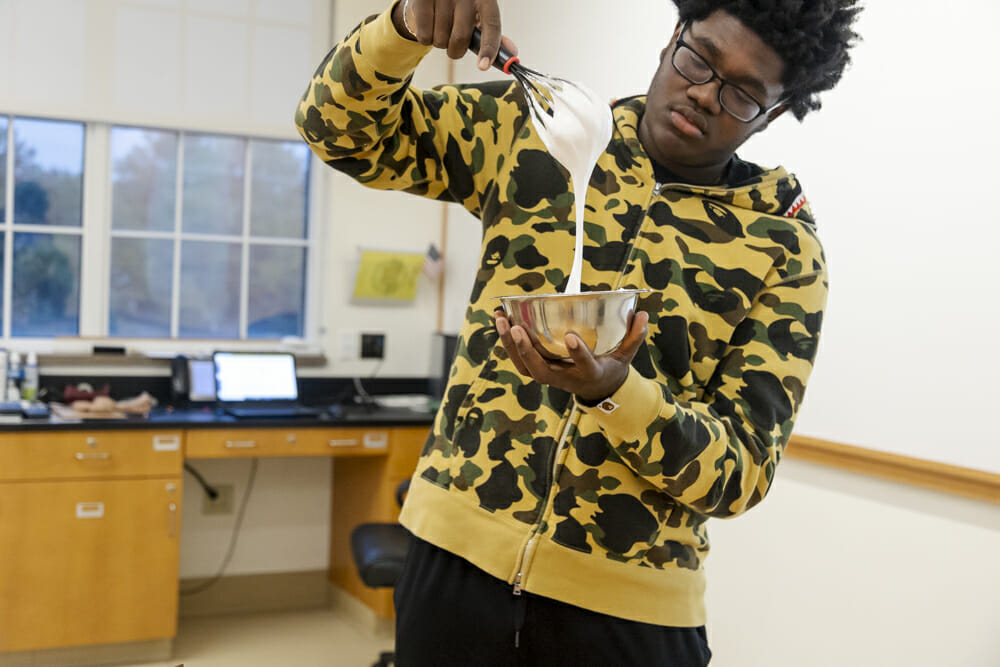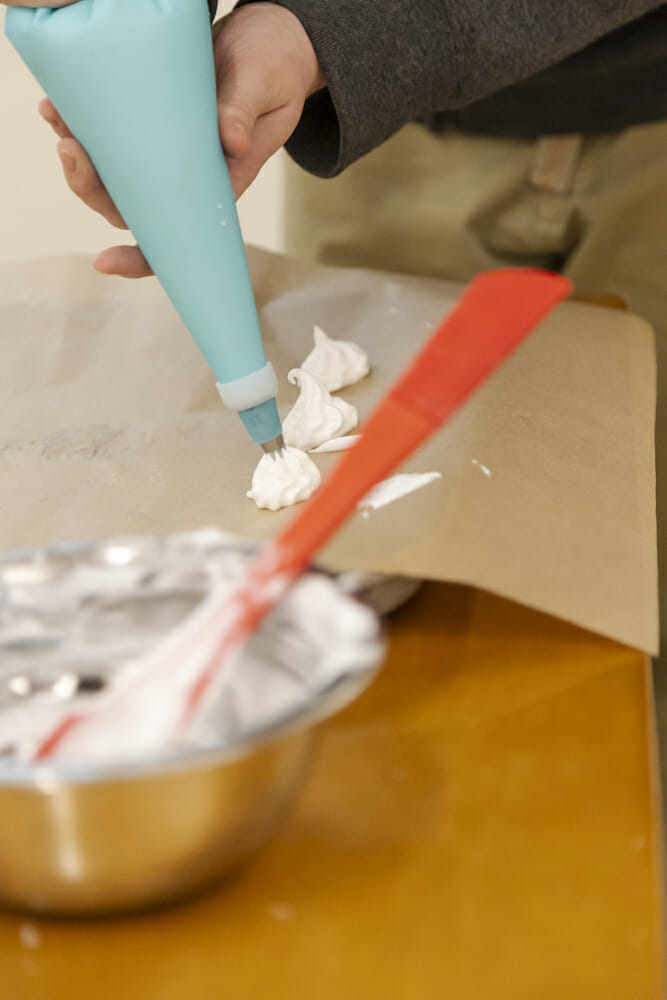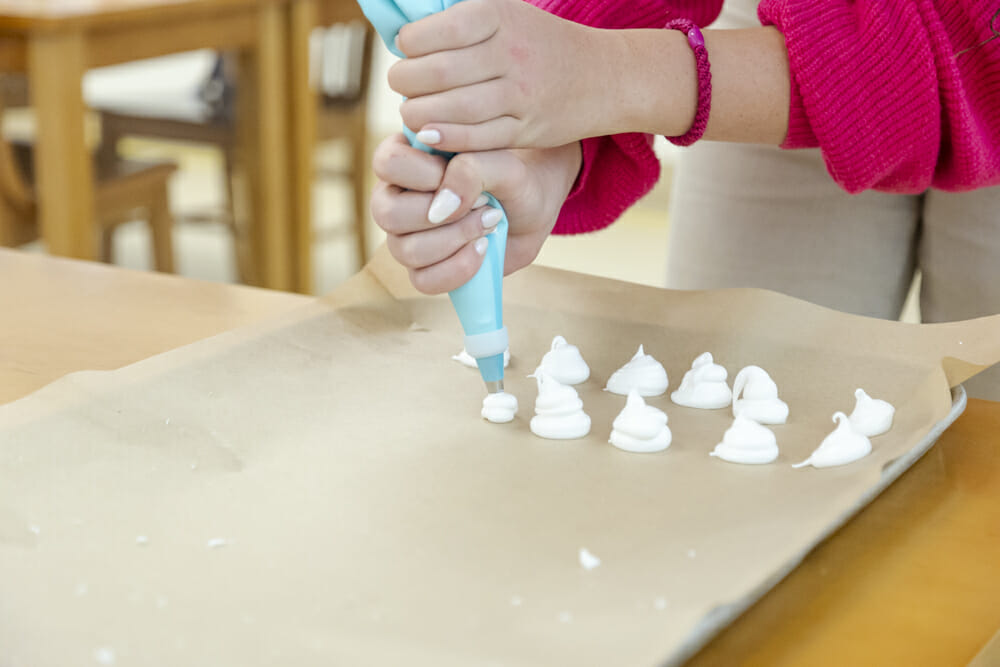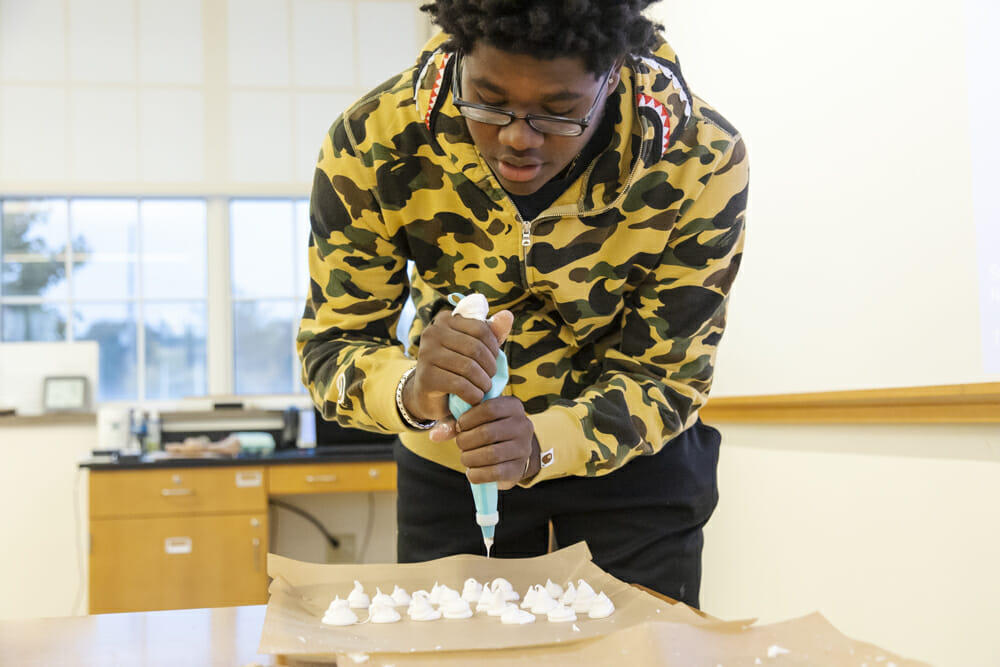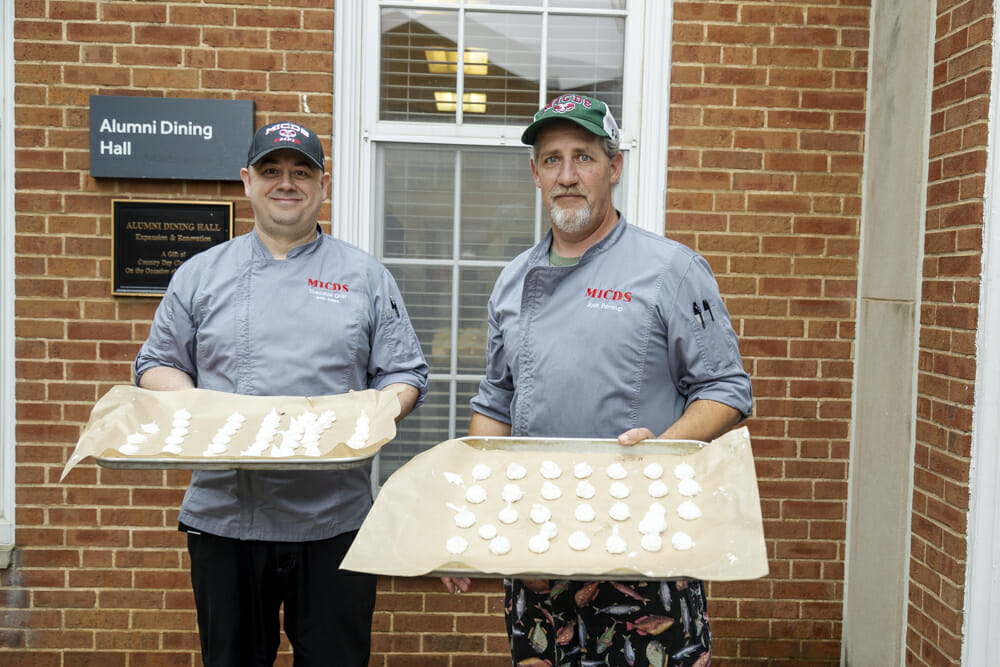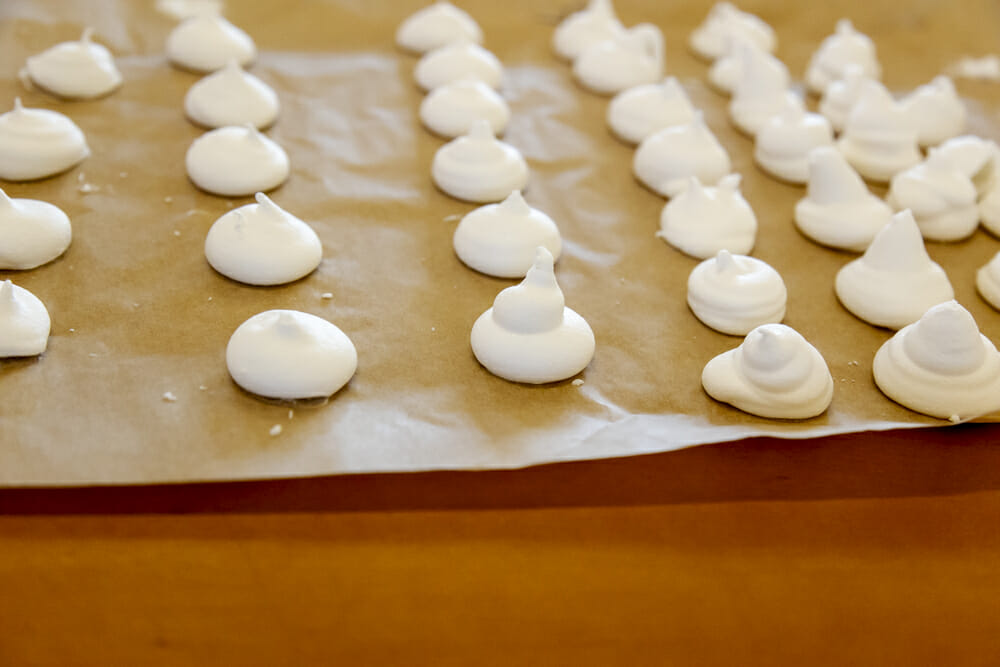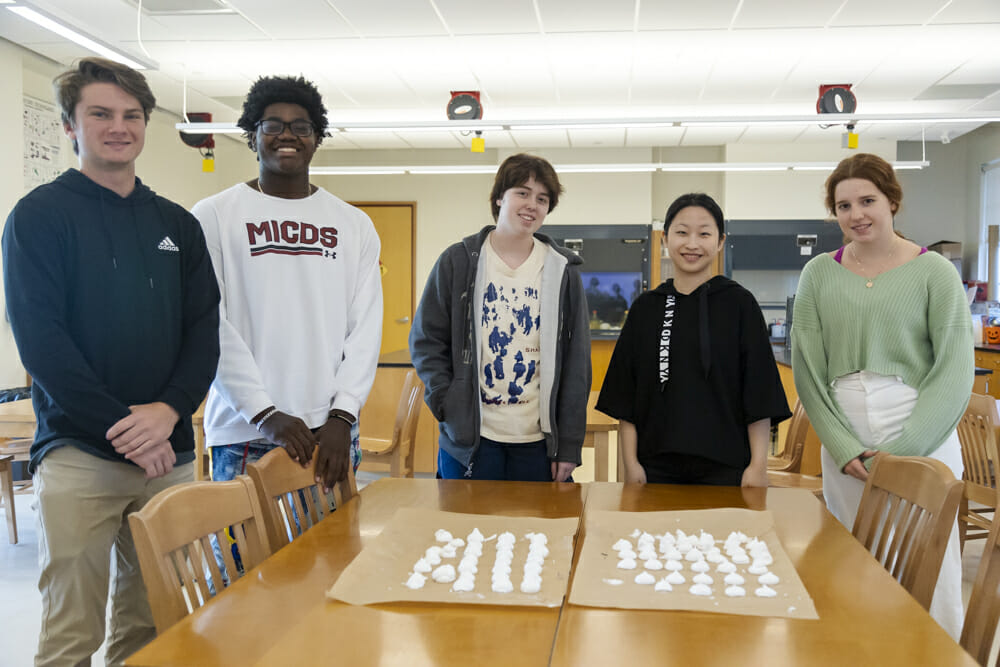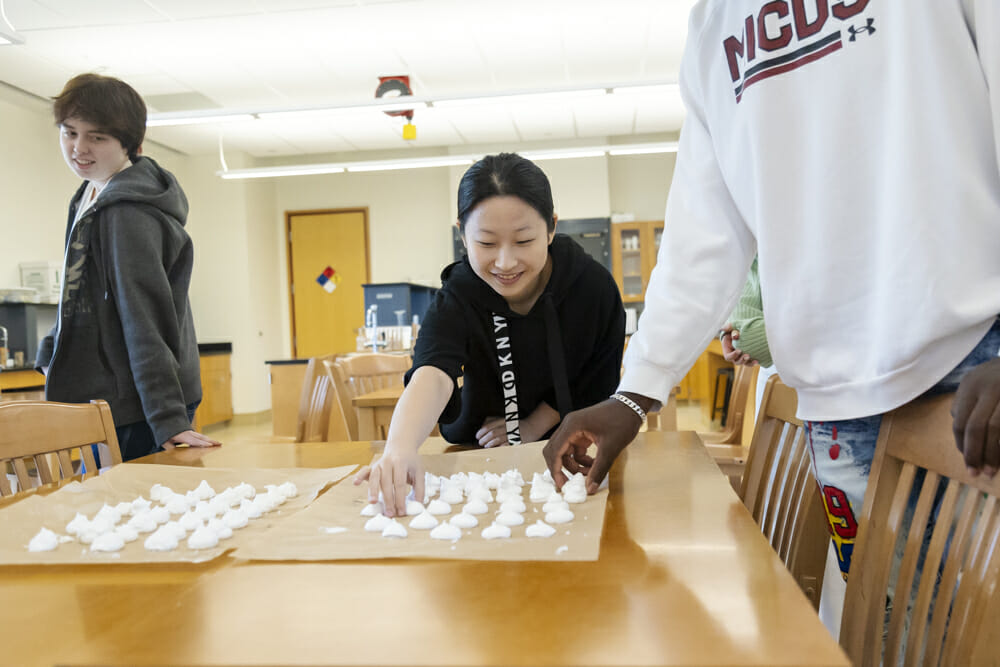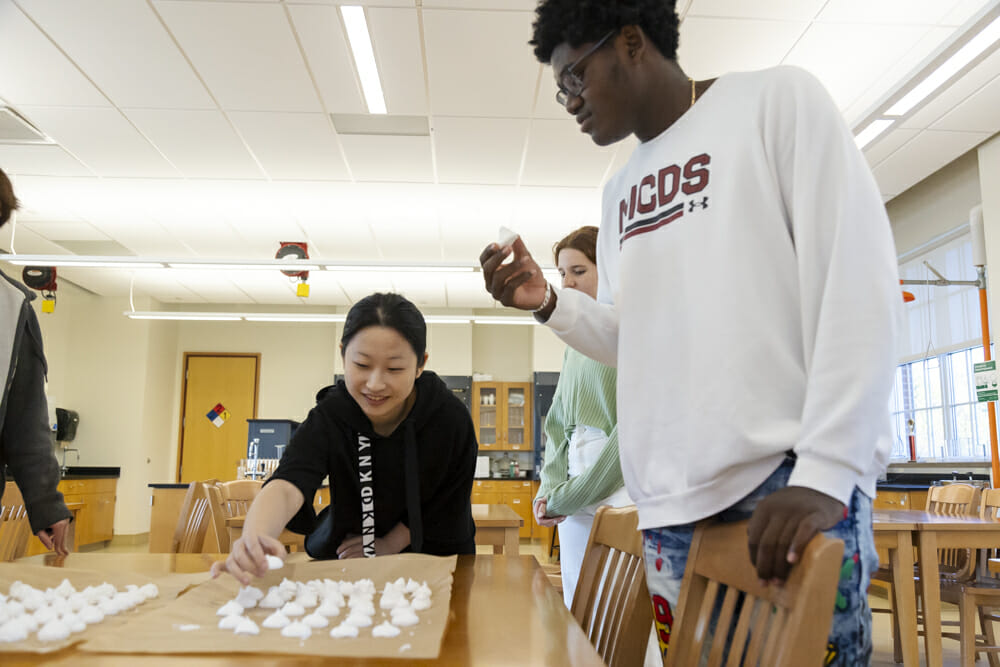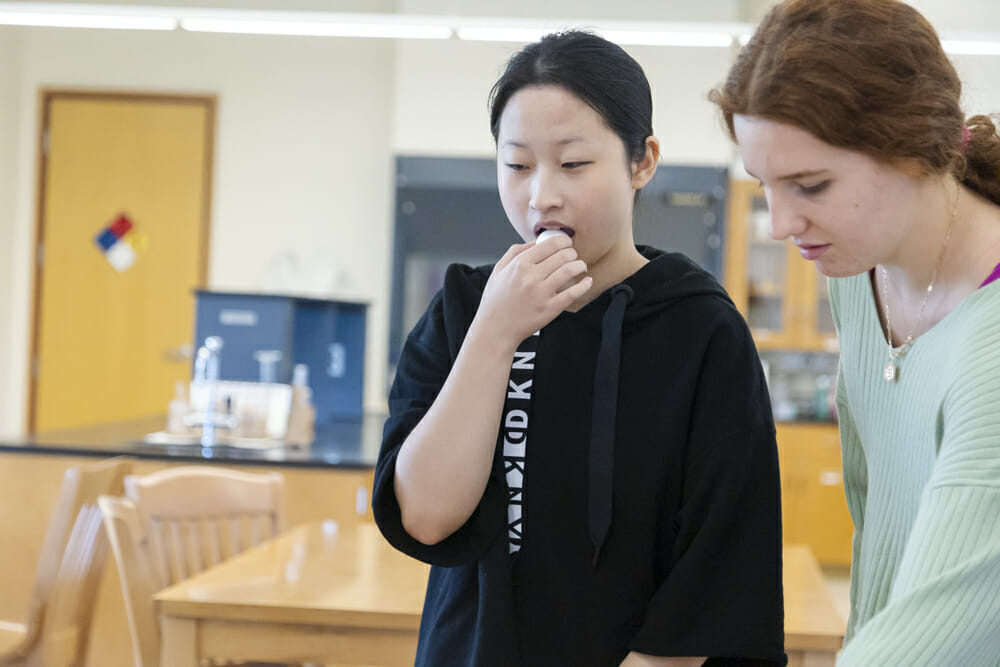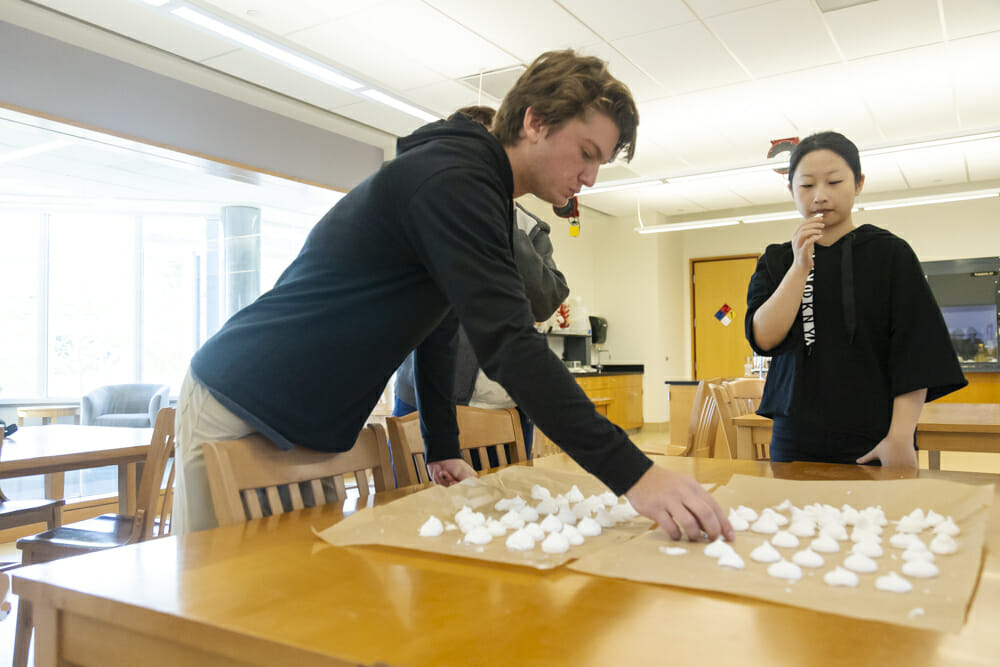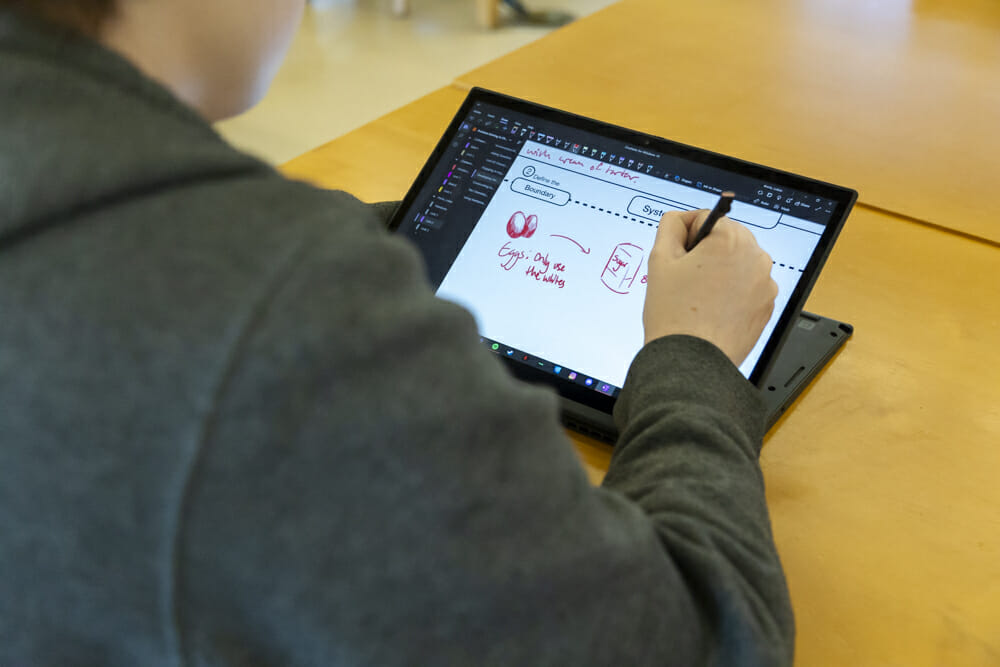A few of our Upper School students recently made and enjoyed homemade meringue cookies. Before you think this is an episode of the Great British Baking Show, it’s just another day in the Upper School Problem Solving in Chemistry class!
Creating the perfect meringue is hard enough, but novice bakers, like our junior science students, dug deep to understand the magic of meringue. First, students got down to kitchen-lab basics by studying the chemical structure of an egg and learned that it is made of 10% protein and 90% water. Next, students added potassium acid tartrate (aka cream of tartar), causing a chemical and structural change that enabled the whipped egg white foam to become more stiff and fluffy. Once students unlocked the chemical characteristics of cream of tartar and how it reacts to the egg whites, they learned that they could easily substitute it with other ingredients with similar chemical elements.
After their research, students carefully separated two eggs in the lab to prepare the raw egg whites for mixing. One group added cream of tartar to their egg whites, and the other group added nothing. Next, they whipped the egg whites into a foamy substance using electric mixers and gradually added sugar. Students took turns whisking the mixture into a fluffier foam before loading the contents into pastry bags and squeezing shapes onto baking sheets. After a quick delivery to the Upper School kitchen for baking, they soon enjoyed the fruits of their lab work.
Upper School Science Teacher Dr. Meg Yoshioka-Tarver’s hope for this experiment was for students to wonder about the details. “The course focus is not to teach regular chemistry but to understand how and why things occur through chemistry,” she said. “If we understand the reason why things occur, we can make modifications and solve problems, which is an important skill in critical thinking. For example, before the lab, they had to do their own research to understand the science of making meringue and recreating it in the lab. Seeing how the compounds behave in real time helps them ask questions versus memorizing a recipe.”
The baking doesn’t stop there! Pancakes are next on the menu, and students weighed in on this first kitchen-based experience.
Harrison Reed-Parker ’24 cooks at home but has never done a lab like this before. “I enjoyed having a different canvas, and it was really cool,” he said. “Getting the whipped egg whites into the pastry bag was challenging, but I would do it again. I’m looking forward to the pancake lab!”
“I like doing academic things that are also something you can do at home,” said Lukas Annis ’24. “I’ve eaten meringue, but I’ve never baked it. I thought learning what different ingredients go into it was a good experience because, at home, I just substitute and eyeball ingredients. Mixing the meringue and keeping it in the bowl was challenging. As a visual person, getting up and doing a hands-on lab is a lot better than on paper. I’m looking forward to the pancake lab, even though I personally like waffles.”
Everdine Ferguson ’24 enjoyed seeing how the different ingredients created different textures. “It was more engaging to see the ingredients interact in person, which was fun!” she said.
Dr. Yoshioka-Tarver shared that her inspiration for the food chemistry unit came from Christina Marsigliese of Scientifically Sweet, an author and food scientist who incorporates the science behind cooking and baking in her cookbooks and blog. Dr. Yoshioka-Tarver said, “Cooking is edible chemistry. We are all chemists if we love cooking!”

